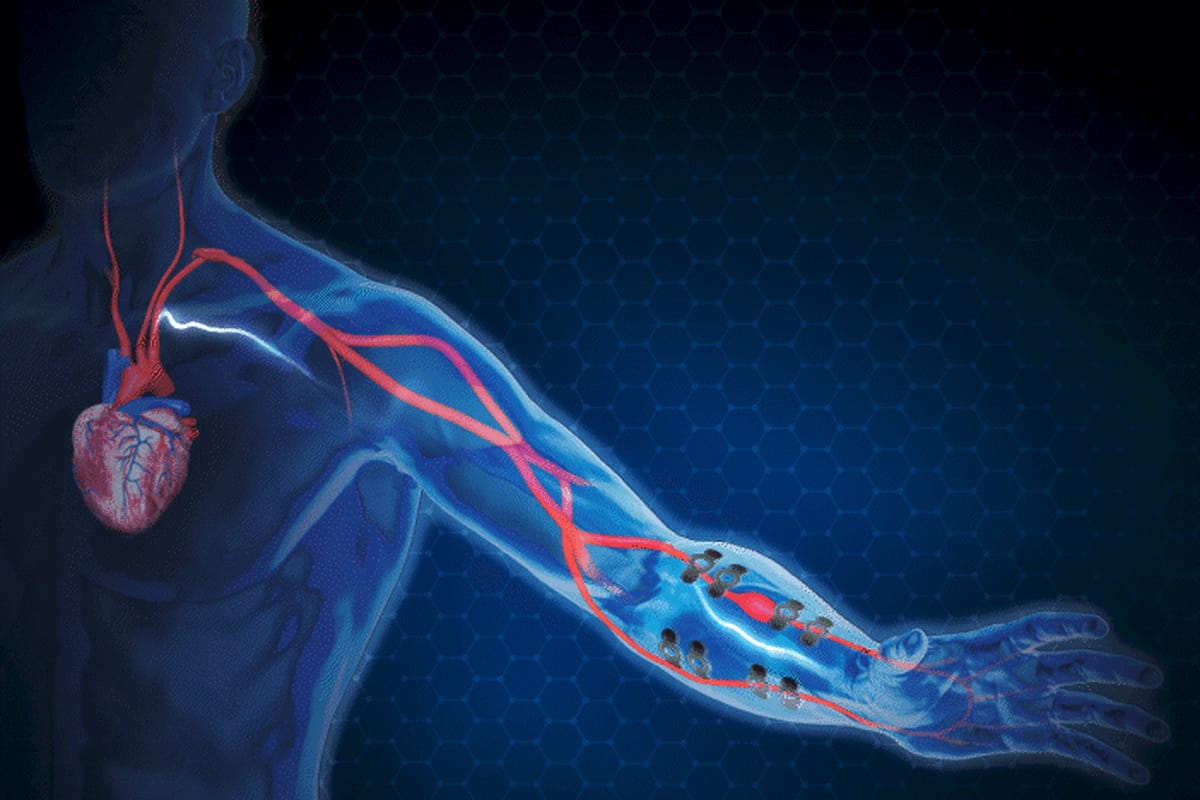Graphene "Tattoo" May Aid in Maintaining Heart Rhythm

Some tattoos truly make the heart go pitter-patter.
According to a recent report in Advanced Materials, scientists have developed a graphene “tattoo” that could potentially treat an abnormally sluggish heart beat in rats. The device functions similarly to a futuristic pacemaker, as it delivers electrical signals that help regulate the heart’s pumping function. While the “tattoo” is currently a proof of concept, a version for human hearts could be ready for testing within five years, says cardiovascular engineer Igor Efimov of Northwestern University in Chicago.
Efimov and his colleagues have been working to create implantable devices that conform to the body, but one of the main challenges has been marrying rigid electronics with soft, sometimes throbbing tissues. For many pacemakers currently in use, doctors thread electrodes on long wires through a vein inside the heart. However, every time the heart beats (about 100,000 times per day), the wires can flex and eventually break, making a new solution necessary. One possible remedy is to use ultrathin materials that can move more easily along with the heart’s own movements, similar to plastic wrap adhering to Jell-O.
One such material that could serve this purpose is graphene, a single layer of carbon atoms configured in a honeycomb pattern that has shown promise in biomedical applications. In the case of Efimov’s research, Dmitry Kireev, a biomedical engineer at the University of Texas at Austin, created graphene “tattoos” that were applied to heart tissue. Sandwiched between layers of stretchy silicone and ultrathin polymer, the transparent layer of graphene was connected by gold tape to wires leading to a power source that delivers electricity through the device.
According to Caltech physicist Nai-Chang Yeh, who was not involved in the research, graphene is a highly flexible, biocompatible, transparent, conductive and strong material for biomedical use. Testing on mouse and rat hearts yielded favorable results, correcting the irregular beat by sending pulses of electricity to the heart. Future versions of the tattoo will be wireless, Efimov says, potentially utilizing a small antenna to receive external electrical signals. One day, he envisions that graphene electrodes the size of rice grains could be injected into the heart muscle. This smaller equipment could act as a pacemaker without the usual clunky components.
While the technology might sound like science fiction, Efimov believes it is almost here, stating that “now’s the time to develop it.”
It's thanks to donations from readers like you that we can continue to provide accurate and engaging science news to the public. As a nonprofit news organization that relies on reader support, we thank you for helping us keep our content free and accessible to the next generation of scientists and engineers. Donate today to invest in quality science journalism.




